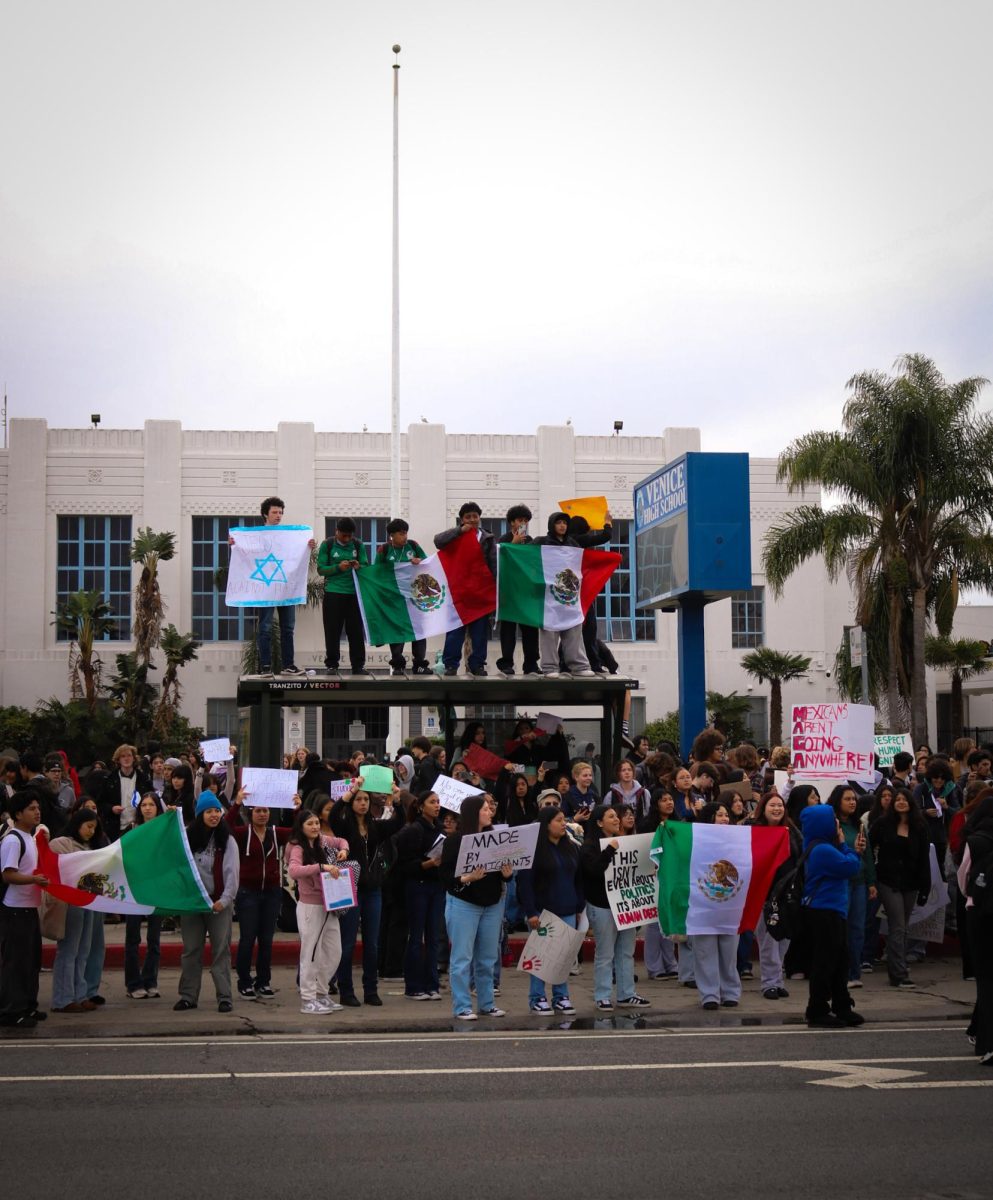Dia De Los Muertos (Day Of The Dead) is a Mexican holiday that celebrates the death of loved family members or friends and welcomes them back spiritually into the land of the living for a reunion. People build ofrendas or altars in cemeteries or in their own homes, which contain food, pictures, flowers, and gifts to either summon or remember the dead.
This unique holiday originated 3,000 years ago, starting with Colombian-Mesoamericans hosting rituals honoring the dead, and from there slowly modernizing the celebration and spreading the knowledge worldwide.
Dia De Los Muertos is traditionally celebrated November 1 to November 2, however depending on the religion you follow the date could change to either October 31 or November 6.
Spanish teacher Angela Fajardo worked with her students, as well as the classes Spanish teacher Maria Lopez Zamudio, Spanish teacher Ms. Gonzalez, and Spanish teacher Rey Silva, to create an altar for Dia De Los Muertos at the Santa Monica Museum.
 Everyone collectively contributed to the ofrenda by adding Calabritas (the writing), hanging skulls, mats, and rice and beans along with donated traditional orange marigold flowers. The altar is decorated beautifully with big bouquets of marigolds, skulls, dolls, candles, small cut-out boxes filled with handmade paper tables and tiny food, framed black and white pictures of passed-on relatives, bowls of fruits, and a large arc of roses above the ofrenda.
Everyone collectively contributed to the ofrenda by adding Calabritas (the writing), hanging skulls, mats, and rice and beans along with donated traditional orange marigold flowers. The altar is decorated beautifully with big bouquets of marigolds, skulls, dolls, candles, small cut-out boxes filled with handmade paper tables and tiny food, framed black and white pictures of passed-on relatives, bowls of fruits, and a large arc of roses above the ofrenda.
The altar is on display from November 1 to November 17.
Fajardo says that Dia De Los Muertos is a celebration of death and that it should be celebrated with a combination of cultures to understand and honor the difference in religion and tradition.
“Death is not the end, but Dia De Los Muertos in its original form is a celebration about those who have departed,” she said.
Fajardo said the altar’s main inspiration was that the project was “to teach students this component of culture” to make an ofrenda, These projects can also get very personal for students, which makes it a meaningful experience.
Farajdo said that the project involved a combination of different religious components and elements.
“You can totally see the joy in this project,” she said. “That’s why we continue to do it because it’s a universal theme and it connects to your loved ones.”













